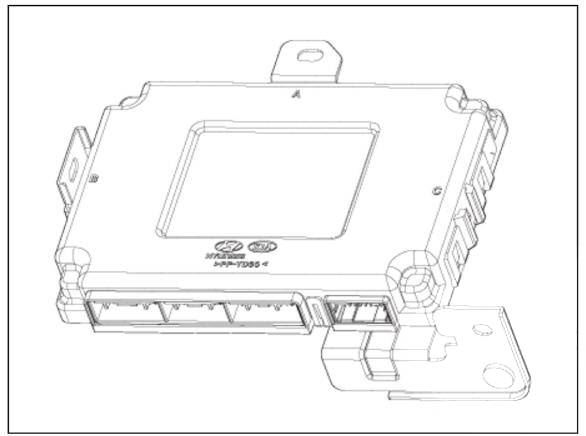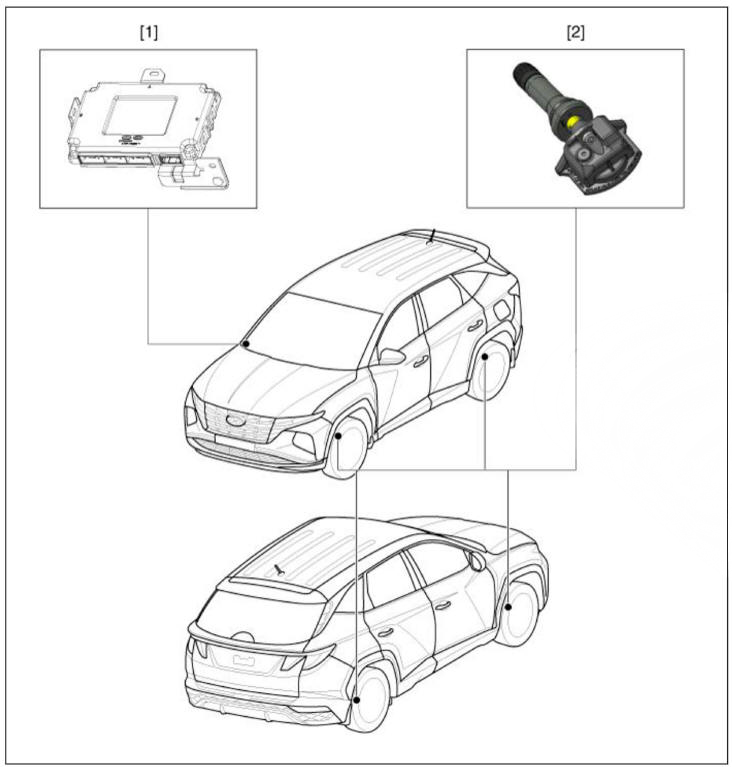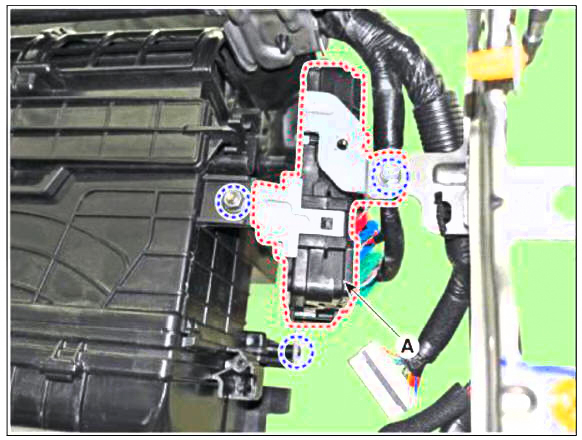Hyundai Tucson: TPMS Receiver : BCM(body control module) integrated management
Hyundai Tucson - Fourth generation (NX4) - (2020-2023) - Workshop Manual / Suspension System / Tire Pressure Monitoring System / TPMS Receiver : BCM(body control module) integrated management
Description

- Mode
(1) Virgin State
- The receiver as a sole part is shipped in this state. Replacement parts should therefore arrive in this state.
- In this state, there is no Auto-Location, no sensor wake-up, no sensor monitoring and no DTC monitoring..
- The state indicates that platform specific parameters must be written to the receiver and that sensors are un-learned.
(2) Normal State
- In order for tire inflation state and DTC monitoring to occur, the receiver must be in this state.
- In this state, automatic sensor location / learning is enabled.
- Overview
- Learn TPMS sensor for under inflation monitoring automatically.
- Uses sensor information, distance travelled, background noise levels, Auto-leam status, short / open circuit output status, vehicle battery level, internal receiver states to determine if there is a system or a vehicle fault.
Operation
- General Function
- Auto-learn takes place only once per Ignition cycle.
- On successful completion, 4 road wheel sensor ID's are latched into memory for monitoring.
- Until Auto-learn completes, previously learned sensors are monitored for under inflation / leak warnings.
- General Conditions to Learn New Sensors:
- Receiver must determine that it is confident that sensor is not temporary:
- Uses vehicle speed.
- Uses confidence reduction of previously learned sensors.
- Typical time at driving continuously over 15.5 mph(25 kph) to learn a new sensor is up to 20 minutes.
- General Conditions to Un-Learn a sensor that is removed :
- It takes less than 20 minutes at 15.5 mph(20-30 kph).
- Confidence reduction is dependent on time which vehicle is driven at speed greater than or equal to 12.4 mph(20-30 kph).
Components Location

- Receiver
- TPMS Sensor
Removal
- Turn the ignition switch OFF and disconnect the battery negative (-) cable.
- Remove the glove box.
(Refer to Body - "Glove Box")
- Remove the heater control unit.
(Refer to Heating,Ventilation And Air Conditioning - "Heater Control Unit")
- Remove the integrated Body control Unit (IBU) (A) after loosening the mounting bolts and nuts.

- Remove the integrated Body control Unit (IBU) (A) after disconnecting the connector.

Installation
- To install, reverse the removal procedures.
Installation
Smart Key Unit
- (Refer to Body Electrical System - "Smart Key Diagnostic")
Smart Key Switch
- (Refer to Body Electrical System - "Smart Key Diagnostic")
READ NEXT:
 ECS (Electronic Control Suspension) System
ECS (Electronic Control Suspension) System
Description
Real-time continuous control of the damping force according to vehicle
running conditions and the
state of road surface will enhance ride comfort and steering safety, including
roll / pitch reduction in
case of vehicle dynamics con
 General Information
General Information
Troubleshooting
Specifications
Tightening torque
Special Service
Tools
Tool
(Number and
Name)/
Illustration/ Use
09568-1S100
Ball joint
remover/ / Removal of
the tie rod
end ball
joint.
09568-4R100
Lower arm
ball j
SEE MORE:
 IBU (Integrated Body Control Unit (IBU)
IBU (Integrated Body Control Unit (IBU)
The IBU manages all function related to :
-"Start Stop Button (SSB) monitoring",
"Immobilizer communication" (with Engine Management System unit for
immobilizer release)
Authentication server" (Validity of Tran
 Inhibitor switch/ Manual control lever
Inhibitor switch/ Manual control lever
Components
Inhibitor switch
Manual control lever
Fault Diagnosis
Fault Diagnosis for Symptom
Specifications
Signal Code Table
Inspection
WARNING
Thoroughly check connectors for looseness, poor connection, bending,
cor
Information
- Home
- Hyundai Tucson - Fourth generation (NX4) - (2020-2023) - Owner's Manual
- Hyundai Tucson - Fourth generation (NX4) - (2020-2023) - Workshop Manual